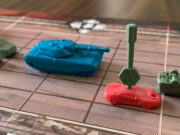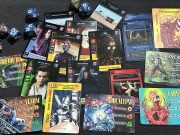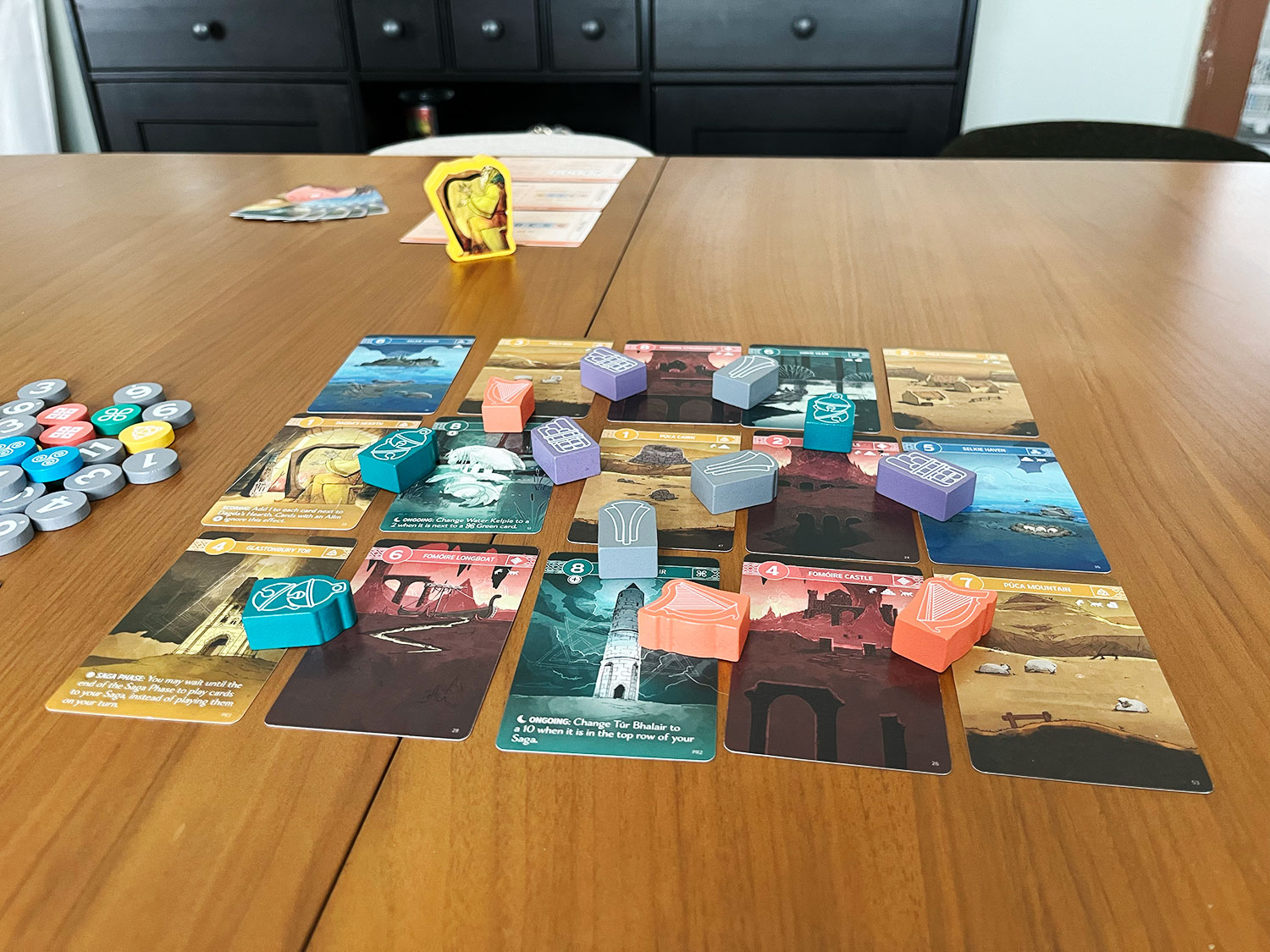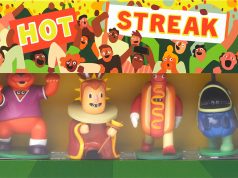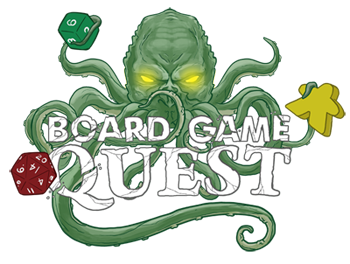This is a guest review from Kerry Bohac.
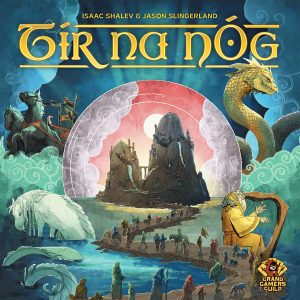 I first saw Tir na nÓg at my local gaming store and was drawn by the name and the artful cover. Growing up as part of the Irish American diaspora, I’ve always been curious about Irish folklore. I’ve stood before ancient passage tombs, wandered around stone circles, and peered into the depths of Oweynagat cave. It’s hard not to romanticize an earlier time. I love listening to the stories, singing the ballads, or bouncing my knee to a lively jig. So off the shelf and into my home, I was ready to play.
I first saw Tir na nÓg at my local gaming store and was drawn by the name and the artful cover. Growing up as part of the Irish American diaspora, I’ve always been curious about Irish folklore. I’ve stood before ancient passage tombs, wandered around stone circles, and peered into the depths of Oweynagat cave. It’s hard not to romanticize an earlier time. I love listening to the stories, singing the ballads, or bouncing my knee to a lively jig. So off the shelf and into my home, I was ready to play.
Tír na nÓg is designed by Isaac Shalev and Jason Slingerland. It’s an open, card-drafting game layered with a spatial puzzle element.
Gameplay Overview:
In Tír na nÓg, players draft cards from a central grid and a hand of dealt cards, each featuring numbers and colors that will score points based on placement within the player’s collection at the end of the game. Some cards feature special abilities that allow for unique actions like rearranging parts of your tableau or manipulating the draft. These abilities are powerful but come with timing considerations, adding a layer of decision-making to your turn.
Each player controls three “storyteller” meeples used to claim cards from the shared drafting grid. Where you place your storyteller determines what cards you’re eligible to take, and since players take turns placing them, you’re always fighting across the table for priority access. This mechanic adds a surprising amount of tension and forward-looking planning, especially as optimal cards get snatched before your turn.
With a playtime of around 45 minutes and a player count that works well from solo up to four (I haven’t played at five, but it feels easily feasible), it hits a sweet spot—easy enough to get to the table, yet satisfying enough to keep me and my friends coming back.
Game Experience:
What sets Tír na nÓg apart is its competitive card-selection process. Strategic trade-offs and tough choices define each round. Do I grab a card that helps complete a color set? Or do I go for a high-numbered card that might help with grid scoring instead? Should I put a card in my hand for a future round? The game also adds hard choices at the end of a round when it’s time to discard from your hand. I often feel I am competing as much with myself as I am against the others at the table.
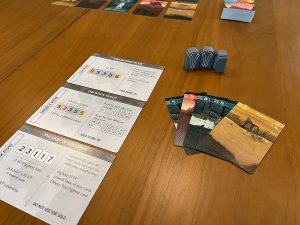 The illustrations were done by Marlies Barends, with the art direction and graphic design by Bridgette Indelicato. Though thematically interesting, the theme and story can get lost during gameplay. The art, however, fully commits to the theme. The cards feature appealing art that helps set the mood, even if the mechanics don’t fully tie back to the lore. If you know a little about Irish folklore or have visited Ireland’s ancient sites, you might find a bit more connection, like I did. The disconnect doesn’t hurt the experience too much—players will still find themselves immersed in the puzzle-like task of assembling the best “tale” through clever drafting and placement.
The illustrations were done by Marlies Barends, with the art direction and graphic design by Bridgette Indelicato. Though thematically interesting, the theme and story can get lost during gameplay. The art, however, fully commits to the theme. The cards feature appealing art that helps set the mood, even if the mechanics don’t fully tie back to the lore. If you know a little about Irish folklore or have visited Ireland’s ancient sites, you might find a bit more connection, like I did. The disconnect doesn’t hurt the experience too much—players will still find themselves immersed in the puzzle-like task of assembling the best “tale” through clever drafting and placement.
One of the game’s strengths is its replay value. Variability in card availability, player drafting choices, and different possible scoring setups ensure that each session feels different. The scoring, which comes at the end of the game, encourages long-term planning and provides plenty of “a-ha” moments as you realize the implications of your earlier choices.
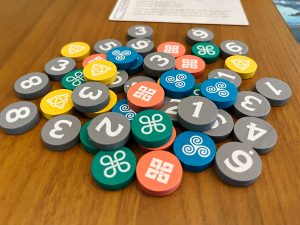 Tír na nÓg is easy to get to the table. The rules are straightforward enough for casual players to pick up quickly, but the interplay of mechanics rewards experienced gamers who enjoy light optimization puzzles. It’s especially well-suited as a bridge game—something to play between heavier titles or as a warm-up at the start of the night. For solo gamers, the included variant provides a satisfying puzzle experience without feeling like an afterthought. Multiplayer interactions scale smoothly without overcomplicating the game.
Tír na nÓg is easy to get to the table. The rules are straightforward enough for casual players to pick up quickly, but the interplay of mechanics rewards experienced gamers who enjoy light optimization puzzles. It’s especially well-suited as a bridge game—something to play between heavier titles or as a warm-up at the start of the night. For solo gamers, the included variant provides a satisfying puzzle experience without feeling like an afterthought. Multiplayer interactions scale smoothly without overcomplicating the game.
Final Thoughts:
I find Tír na nÓg is a beautifully illustrated card game that blends familiar mechanics with just enough strategy and tension to make it an engaging “bridge game” for your game-night rotation. Despite its shorter playtime and relatively simple ruleset, I found the gameplay experience to be engaging. The tension of shared drafting space, the pressure of making every card count in your tableau, and the multiple scoring pathways all come together to create a game that feels smart without being exhausting. While Tír na nÓg won’t replace your heaviest strategy games, and it doesn’t try to, it carves out its own space as a midweight filler with just enough brain burn.
Final Score: 4 Stars – Tír na nÓg offers a satisfying mix of puzzle-solving, card drafting, and light, competitive interaction that works for a wide range of player counts and experience levels. With its appealing art, high replayability, and clever end-game scoring, it’s a great addition to any collection.
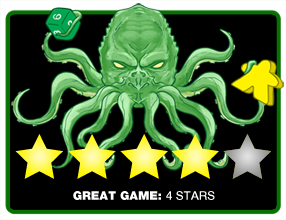 Hits:
Hits:
• Engaging for all levels of players
• Great production value and art
• Replay value
Misses:
• Theme fades into background
• Box could be smaller
 About the Author: Kerry is a casual board gamer who returned to the table during the pandemic. She’s here for trick-taking to heavy euro, competitive to cooperative, and loves a solo puzzle to solve.
About the Author: Kerry is a casual board gamer who returned to the table during the pandemic. She’s here for trick-taking to heavy euro, competitive to cooperative, and loves a solo puzzle to solve.




